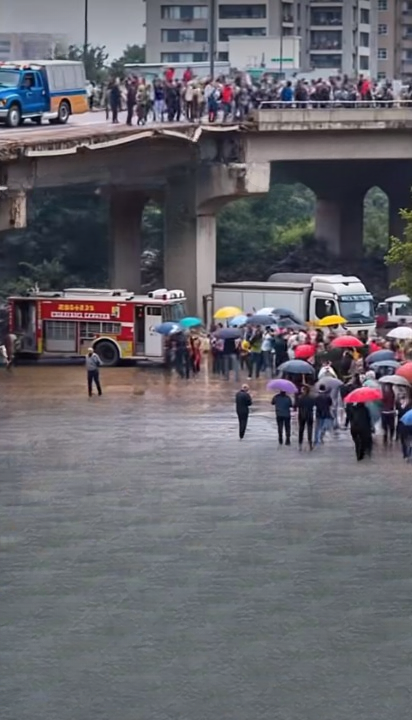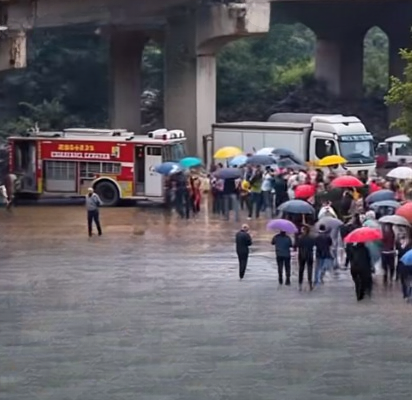In the quiet hours of Monday morning, a sudden and powerful earthquake shook the China–Myanmar border region. What began as a barely noticeable tremor quickly escalated into intense shaking, sending buildings swaying and prompting residents to seek safety.
The earthquake registered a magnitude of 7.7, with its epicenter located approximately 10 kilometers below the surface, according to the U.S. Geological Survey (USGS). The shallow depth amplified the tremor’s destructive power, affecting multiple regions across southern China, northern Thailand, and parts of Myanmar.
Immediate Impact on Communities

The earthquake caused significant damage to homes, schools, and infrastructure. Initial reports confirmed numerous fatalities and hundreds of injuries. In some rural areas closest to the epicenter, communication networks were disrupted, making it challenging for emergency responders to assess the full scope of the disaster. Tens of thousands of people have been displaced, seeking temporary shelter as their homes became unsafe.
In Myanmar, towns near the epicenter experienced particularly severe damage. Many older buildings, constructed without modern earthquake-resistant standards, were severely impacted. In Yunnan Province, China, hospitals quickly reached capacity as individuals with injuries, including fractures and head trauma, were treated.
Tremors Felt Across Borders
The earthquake’s tremors extended far beyond the epicenter. Residents of northern Thailand’s Chiang Rai and Chiang Mai felt buildings sway noticeably, prompting many to evacuate to open spaces. Even in Bangkok, over 700 kilometers away, light tremors were reported. In Myanmar, entire villages experienced rolling ground, with roads and fields developing cracks, and some historical temples and monuments sustaining partial damage.
Emergency Response Efforts
Local governments, supported by regional disaster relief agencies, mobilized quickly. Rescue teams with heavy machinery, medical supplies, and trained personnel were dispatched to the hardest-hit areas. Efforts were slowed in some regions by landslides, blocked roads, and power outages. Emergency shelters have been established in schools, stadiums, and community centers, providing food, water, and blankets for displaced residents.
International organizations, including the Red Cross and Red Crescent Societies, have pledged support, preparing tents, medical supplies, and communication equipment for rapid deployment.
Stories of Resilience
Amid the disaster, accounts of courage and survival have emerged. In one village in China, a family of five was rescued from the rubble of their collapsed home with the help of neighbors and emergency teams. In Myanmar, a teacher protected her students as the roof of a classroom began to cave, sustaining injuries but saving dozens of children. These accounts highlight the resilience and solidarity communities demonstrate during crises.
Expert Insights
Seismologists noted that the quake’s shallow depth significantly contributed to its destructiveness. The China–Myanmar border lies along a tectonically active fault system where the Indian Plate meets the Eurasian Plate, a region historically prone to powerful earthquakes. Past events, such as the 2011 Yunnan earthquake and the 2015 Nepal earthquake, underscore the ongoing risk in these areas.
Challenges for Rescue Teams
Rescue operations face multiple challenges, including landslides, damaged roads, communication outages, and a shortage of medical resources. Hospitals are overwhelmed by the sudden influx of patients, leading to the establishment of field hospitals to accommodate the overflow. Aftershocks, some above magnitude 5.0, continue to pose risks to both survivors and emergency personnel.
Global and Regional Support
The earthquake has drawn attention from neighboring countries and international humanitarian organizations. Thailand, India, and global agencies are providing logistical support, emergency supplies, and coordination for aid delivery. Experts emphasize that the first 72 hours following an earthquake are critical for locating survivors and providing necessary care.
Human Impact
Beyond physical damage, the earthquake has had profound emotional effects. Families are coping with loss or separation, while children and elderly individuals in temporary shelters face uncertainty and distress. Mental health specialists stress the importance of psychological support alongside physical reconstruction, especially for vulnerable populations.
Lessons and Recovery Efforts
This earthquake serves as a reminder of the need for earthquake preparedness, resilient infrastructure, and early warning systems. Previous events, including the 2008 Sichuan earthquake and the 2015 Nepal earthquake, demonstrated the importance of building safety and disaster readiness.
As rescue operations continue, attention will shift toward recovery and rebuilding. Governments and international partners will work to restore essential services, provide housing, and support long-term community resilience. While the path ahead is challenging, the collective response highlights the strength and determination of affected communities.
Conclusion
The 7.7-magnitude earthquake near the China–Myanmar border has caused widespread disruption, displacement, and loss. Yet amid the tragedy, stories of courage, solidarity, and resilience offer hope. The disaster underscores the importance of preparedness, international cooperation, and community support in mitigating the impact of future natural events.



